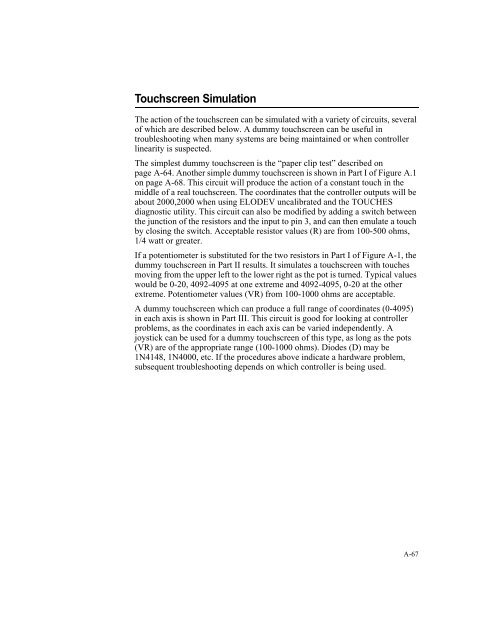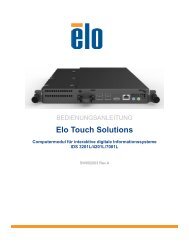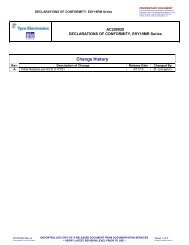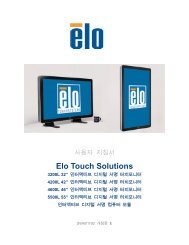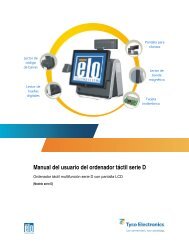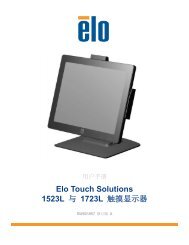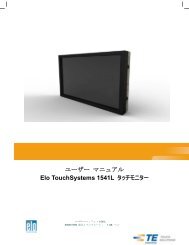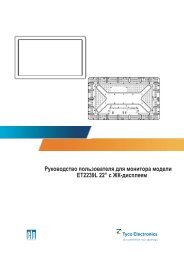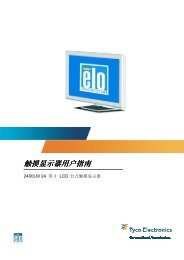AccuTouch Product Guide - Elo TouchSystems
AccuTouch Product Guide - Elo TouchSystems
AccuTouch Product Guide - Elo TouchSystems
You also want an ePaper? Increase the reach of your titles
YUMPU automatically turns print PDFs into web optimized ePapers that Google loves.
Touchscreen Simulation<br />
The action of the touchscreen can be simulated with a variety of circuits, several<br />
of which are described below. A dummy touchscreen can be useful in<br />
troubleshooting when many systems are being maintained or when controller<br />
linearity is suspected.<br />
The simplest dummy touchscreen is the “paper clip test” described on<br />
page A-64. Another simple dummy touchscreen is shown in Part I of Figure A.1<br />
on page A-68. This circuit will produce the action of a constant touch in the<br />
middle of a real touchscreen. The coordinates that the controller outputs will be<br />
about 2000,2000 when using ELODEV uncalibrated and the TOUCHES<br />
diagnostic utility. This circuit can also be modified by adding a switch between<br />
the junction of the resistors and the input to pin 3, and can then emulate a touch<br />
by closing the switch. Acceptable resistor values (R) are from 100-500 ohms,<br />
1/4 watt or greater.<br />
If a potentiometer is substituted for the two resistors in Part I of Figure A-1, the<br />
dummy touchscreen in Part II results. It simulates a touchscreen with touches<br />
moving from the upper left to the lower right as the pot is turned. Typical values<br />
would be 0-20, 4092-4095 at one extreme and 4092-4095, 0-20 at the other<br />
extreme. Potentiometer values (VR) from 100-1000 ohms are acceptable.<br />
A dummy touchscreen which can produce a full range of coordinates (0-4095)<br />
in each axis is shown in Part III. This circuit is good for looking at controller<br />
problems, as the coordinates in each axis can be varied independently. A<br />
joystick can be used for a dummy touchscreen of this type, as long as the pots<br />
(VR) are of the appropriate range (100-1000 ohms). Diodes (D) may be<br />
1N4148, 1N4000, etc. If the procedures above indicate a hardware problem,<br />
subsequent troubleshooting depends on which controller is being used.<br />
A-67


